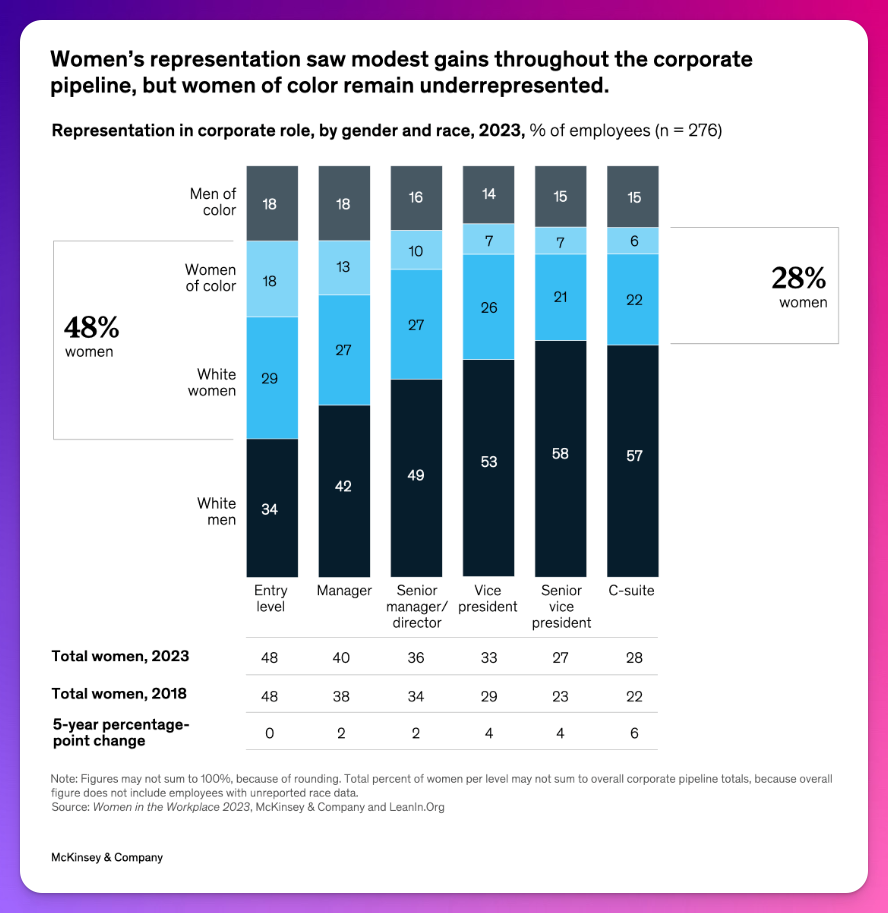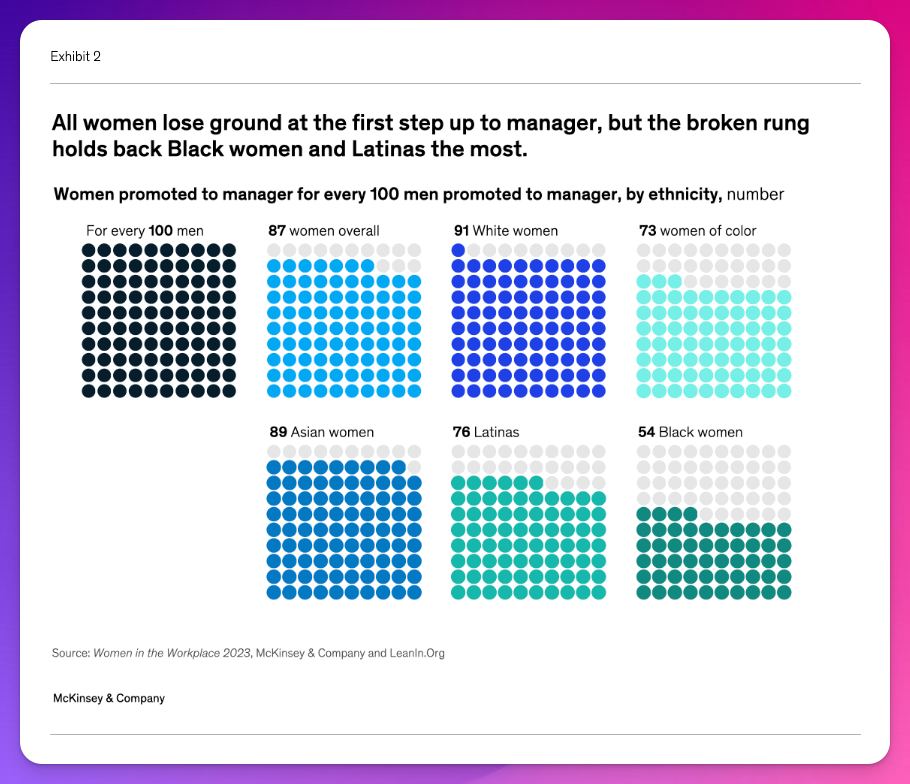I just wanted to start today's Roundup with a HUGE thank you to the 4 subscribers who are supporting this work with a paid subscription. I don't want to make it weird by naming you, but I do see your contributions and I'm really grateful for them. Thanks. <3
In today's Roundup:
News from Around Supportlandia (and Beyond)
And Now for Some Good News
Read, Watch, and Listen
Get Hired
Upcoming Events
News from Around Supportlandia (and Beyond)
We Need to Talk About the Elephant[1]
I had originally planned for a wide range of irreverent and snarky news to open this edition of the Roundup, but events in the wider CX community changed my plans for the main story. So instead we’re talking about one topic that’s much less fun and much more awkward.
Because we need to talk about the elephant. And I don't mean the elephant in the room – I mean the elephant at the door, guarding the room.
Let’s say advancing through your career is like walking through a series of connected rooms. And let’s say you’re about to walk into your first room, for your first job, but there’s a baby elephant at the door. That’s strange, you think, but it’s okay! It’s a chill elephant and you, like most people, can get around it. You pat the elephant on its cute little head and walk confidently into the room.
Sometime later, it’s time to go into the next room. You’ve been working hard, leveling up in your job, and you’re ready for a promotion. And even though you know the elephant at this new door is a lot bigger, it’s fine! You had a great boss who taught you a lot, and you’ve attended some high-quality elephant-wrangling conferences. You have some solid talking points; a few people you met at the conference even promised to put in a good word for you with the elephant!
But when you get to the new door, there’s a bunch of people there. A very small few seem able to go right in, fist-bumping the elephant’s trunk like they’re old pals. The rest are kind of milling around, trying to persuade the elephant to let them in, asking each other, "Hey, isn't it weird that there's an elephant here? How do I get around it?"
So there you are, a newly-trained elephant wrangler, and you have two choices: grab onto as many people as you can and take them with you past the elephant and into the room, or ignore them and go in alone, hoping they figure it out for themselves.
Oh but actually, there’s a third choice, and it seems that a few of the CX folks inside that last room are picking it. They’ve decided to try to teach the elephant a new trick: keep everyone else outside. We say the room's full, so it's full.
On Thursday, Scott Tran, the founder and manager of Support Driven (a major Slack community for CX professionals, of which I am a member), announced that Support Driven was making changes to its annual Leadership Summit based on feedback from community members in senior leadership positions.
The Leadership Summit is billed as an event “where Heads of Support and Senior Support Leaders level up, together.” Since last year, attendance at the Summit has been limited to senior leaders who apply and are accepted to the conference (at the request of – you guessed it – community members in senior leadership positions).
This year, however, attendance at the Leadership Summit would be limited to 50 leaders total, with tickets available only to those who are already members of Support Driven’s invite-only Senior Leadership group.
Of course, this announcement prompted some questions:
- There’s an invite-only senior leadership group? How does one get an invitation to this group?[2]
- How is a “senior leader” defined?
- What is the purpose of a conference if it has such a limited audience?
- Who does a conference like this really serve?
To his credit, Scott answered our questions to the best of his ability, heard our concerns, and by Friday afternoon had announced that Support Driven was reconsidering the changes in attendance limits.
First, what’s good: this is how things are supposed to work in a healthy community. Someone proposes a change, and the community gives feedback on that change. If the community as a whole doesn’t like it, it doesn’t happen. The system worked.
However, and this is a big however: I’m really disappointed that there are folks in our CX community who looked around the room they managed to get into despite the elephant, saw an already small group of people who were mostly just like them, and thought, “Nah, this isn’t exclusive enough.”
How do I know that room was already pretty small and homogenous? There’s data!

The percentage of women occupying leadership positions shrinks the higher they go: from holding 48% of entry-level roles to 28% in the C-suite. Men of color occupy 18% of entry-level roles, but only 15% by the time they reach the C-suite level. And the figures aren’t particularly great for women of color at any level: women of color hold 18% of entry-level roles to just 6% in the C-suite.
And if you think it’s just because there’s no interest or women are just not working hard enough, it’s not:
For the ninth consecutive year, women face their biggest hurdle at the first critical step up to manager. This year [2023], for every 100 men promoted from entry level to manager, 87 women were promoted (Exhibit 2). And this gap is trending the wrong way for women of color: this year, 73 women of color were promoted to manager for every 100 men, down from 82 women of color last year. As a result of this “broken rung,” women fall behind and can’t catch up.

And do you know what’s among the top recommendations for fixing the broken rung? Investing in the careers of men and women of color and women of all racial and ethnic backgrounds.
Leading companies can expand formal skills development beyond technical training, offering resources such as sessions on how to prioritize career development and how to be effective in promotion interviews; matching programs that pair women with sponsors (who can offer seniority, power, and influence to help those they are sponsoring meet their goals); networking groups; and a formalized professional-development process.
Now, granted, a lot of this investment needs to come from employers – particularly in regards to sponsorship, which I highly recommend digging into more if you’re making your way through corporate America.
But the unfortunate reality shown by all this data is that employers aren’t investing in our careers. A lot of us have to do it ourselves, a little at a time, however we can.
Participating in professional communities is one way we do that, but there’s often no substitute for the learning that takes place when a bunch of smart people gather with the intention of sharing knowledge. Nor is there a more effective networking strategy than talking with someone in person so they can put a name to our potential, particularly if that someone is a leader in our field, particularly in a field with as few senior leaders as we have in CX.
Look, I know it’s easy to vilify a nebulous, faceless group, and it’s not my intention to do that. Support Driven is one of the most open, welcoming, and diverse communities of which I’ve been privileged to be a part. That it sponsors a leadership conference, one of the few CX-specific leadership conferences to exist, is extraordinary.
But the fact remains that there are enough senior CX leaders in the community who want even more restrictive attendance to warrant those changes being considered, so I gotta ask those folks:
Why, as someone who’s made it into the room as a senior leader, is your instinct to have the elephant guard the door behind you?
Maybe your answer is that you just didn’t think asking for a smaller, more exclusive event was guarding the door behind you. In that case – and I truly mean this in the gentlest way possible – don’t you think that’s an indictment in and of itself? If you’re leading people and you’re not thinking about how facetime with industry leadership, how access to their knowledge and experience can help or hinder your CX employees’ careers, then that’s a problem, my friend.
Or maybe your answer is that you just want a space to talk to people with the same responsibilities and challenges as you. To which I have to say: those spaces exist already. In Support Driven (in the senior leadership group, given it’s invite-only), in other professional communities, and in your companies. So again, I have to wonder why you feel the need to replicate those insular spaces in what’s supposed to be a welcoming gathering place for CX professionals.[3]
Lastly, maybe your answer is that you think a more intimate space means leaders can be more candid. Okay, but what do you want to say to a group of senior leaders that you couldn’t say to a frontline team or junior managers? Also, going out for coffee is a thing you can do. Or hosting a Google Meet, whatever’s more your speed. There’s no reason to further restrict an already restricted event just so you can have those conversations – there are other ways to facilitate that without limiting the opportunities of others.
I mean, believe me, I get it. You didn’t put the elephant at the door, and maybe you can’t move it, but in a community, we all do what we can. If you’re a leader, then be a leader. Take the people you can past the elephant and into the room with you.
And if you don’t want to do that, well. Maybe find a different room to be in.[4]
And Now for Some Good News

Uh, now for the lighter news. These folks got hired or promoted! They're awesome, and so are you. Hang in there.
- Martin Eischeid is joining Sonar as a Renewals Specialist.
- Valerie Figueroa is joining the State of California in an IT role.
- Mike Larson joined Scribe as an Enterprise Customer Success Manager.
- Anuja Nimbalkar joined PeopleGrove as a Product Support Specialist.
- Janina Davies joined Swoogo as a Product Support Specialist.
- Joey Kudish joined Pantheon Platform as a Senior Solutions Architect.
- Drew Woods joined Null Games as Head of Content.
- Sarah Betts was promoted to Director, Customer Support at Alyce.
Obviously these are just the people who were okay with me celebrating them publicly, but I've seen more! And if this is also you, let me know. I'd love to celebrate you, too.
Put Me in, Coach
Jordan Sale of Rora is offering 4 months of free career advancement coaching to individuals who are:
- earning less than $100,000 a year,
- in the their first full-time / contractor / internship role in tech, and
- (ideally) making a pivot from another field like retail, manufacturing, etc.
Send Jordan a DM if you (or someone you know) fits the qualifications above. The deadline to reach out for their first cohort is Tuesday, January 23rd.
Frameworks for Success
Neal Travis (of Growth Support) announced on Tuesday that he's working to develop a Support Competency Framework for Professional Development:
Because why can’t Support be a home for your career that you can progress in, right? This will go a long way in making a competency framework that will help modern support professionals have a clear path for growth!
Toward that end, he's asking for support professionals to complete a Support Competency Survey. It asks open-ended questions and takes long-form answers, so I recommend setting aside 10-15 minutes to complete it. The questions are thoughtful and on-point, and it's for something that would benefit all of us, so I hope you'll participate!
Read, Watch, and Listen
Read
Anne Marie Trass wrote about how to create great support documentation for customers and support teams for Tettra.
Chrissy Chavez wrote about AI and the Gravity of Mediocrity for Help Scout.
Marybeth Alexander wrote about how and why her company KnowledgeOwl runs a 25-hour work week.
Ben McCormack wrote about the value of composing a written update, even when productivity tools are already tracking your work.
Harish Maiya put together a complete list of AI tools for customer support.
This is a tiny bit outside CX, but a former co-worker of mine Elizabeth Lin created a neat and free Job Tracker template for Notion, which I thought might be of interest to those of us who are job-hunting.
I challenged ChatGPT to answer 7 common customer service scenarios and wrote about measuring your support team's capacity for SwiftEQ. I also wrote a complete guide to understanding and managing your customer lifecycle for Help Scout.
Lastly, filed under we laugh so we don't cry: Now Hiring: Not You.
Watch
The Teambuilding Cultures podcast talked to Rob Dwyer about the importance of organizational culture in the contact center and how it drives the customer experience.
Caffeinated CX talked to Jeremy Watkin about support's journey at NumberBarn.
The wonderful Hosam Hassan is offering a free YouTube course on how to start freelancing remotely.
Listen
The Customer Support Leaders podcast talked to Andrew Rios to learn about the "Support Report" and how you can build one.
Leaders Unscripted talked to María de Antón about moving from a customer success role to a VP of Product.
Get Hired
I play Bad Job Bingo with every job listing that appears in the Roundup and categorize them according to how well (or poorly, if I hit Bingo) they do in the game.
However, please remember that a job appearing in a positive category isn’t an endorsement of any role or company, and a job appearing in a negative category doesn't mean I think you shouldn't apply if it works for you. Bad Job Bingo is simply an effort to give you a shortcut to finding roles that may match your needs and values.
These and past contestants can be found at Support Human Jobs.
Green Means Go
No flags, or green flags only! A true unicorn.
- Sadly, none this week.
Eh, It’s Probably Fine
A few flags popped up, but no serious ones.
- Pricing Actuary ("Competitive" comp not given) at hyperexponential (Hybrid-London)
- This job was so close to making it in Green Means Go! Unfortunately, they listed "competitive" comp without actually giving a number, so it missed out. Sad.
- Enterprise Customer Success Manager ("Competitive" comp not given) at hyperexponential (Hybrid-London)
- Overall, I like this company's approach to job descriptions. Of the few I've read, all were carefully and thoughtfully written, focusing on the skills and qualities needed for a candidate to be successful without being obnoxious. I wish they'd include an actual salary range (and omit the "fun office" bit so many orgs seem to think is a draw – it's not! our homes are more fun, I assure you!), but then that's why we have this category.
- Internal Support Strategy & Operations, Senior Manager ($140k-$211k) at Okta (Remote US)
- Support seems to report to Sales, which makes me twitch.
- Business Systems Analyst, Support Operations ($107k-$145k) at Checkr (Hybrid US-Denver, CO)
- Principal Customer Success Manager ($123k-$166k) at Checkr (Hybrid US-Denver, CO)
- There's an identical role open for San Francisco on Checkr's Jobs page.
- Principal, Customer Strategy ($123k-185k) at League (Remote US)
- LOL: "You may lead smaller Platform Customer relationships or work alongside other members of the [insert name of team]"
- Obviously, there are some typos in the job description and it's very business-speaky, but I don't think either is particularly worrisome, especially since there are some green flags in this listing too (like being clear about the application and interviewing process).
- Senior Manager, Customer Strategy ($99k-$150k) at League (On-site-Chicago)
- Director of Product & Operations, Customer Experience ($185-$275k) at Grindr (Hybrid US-Tuesdays & Thursdays in San Francisco or Los Angeles [West Hollywood])
Tread Carefully
Didn’t quite hit bingo, but there were several yellow flags or more than one red flag.
- Customer Success Manager (No comp given) at Quora (Remote-Ireland)
- Quora says they value diversity and want individuals of all backgrounds to apply but then they disadvantage those folks in salary negotiations by not volunteering even a base comp. Instead they say "there are many factors that will determine the starting pay, including but not limited to experience, location, education, and business needs." Let's stop letting companies get away with this empty, spineless talk, huh?
- Manager, Product Support ($88k-$100k) at PetDesk (Remote US)
- I'm curious as to why this isn't a Director or Head of-level role when the description says that "Petvisor is the holding company for several subsidiaries [...] This is an exciting employment opportunity with responsibilities spanning the portfolio of companies." There's some misalignment between responsibilities and title as a result, and I also think the comp is too low for a role like this.
- VP Partner Support (No comp given) at Nuvei (Remote US-Scottsdale, AZ)
- Customer Support Advocate (No comp given) at ServiceTitan (Remote US-Draper, UT)
- There's an identical role open for Atlanta, GA.
- Job application is through Workday. My condolences.
- Director, Technical Support ($124k-$178k) at ServiceTitan (Remote US)
- Look, I don't think you can honestly say you're "committed to fair and equitable compensation for all of [your] employees" and then only post salary ranges for leadership positions. Come on.
- Job application is through Workday. My condolences.
- Vice President, Global Customer Support ($194k-$242k) at ServiceTitan (Remote US)
- Job application is through Workday. My condolences.
- Customer Support Specialist ("Competitive" salary not given) at Topstep (Remote US)
- Director of Customer Success USA (No comp given) at Run:ai (Remote US)
- Doesn't mention benefits anywhere in the job description or the Join Us page.
- Customer Support Operations Analyst ("Competitive" comp not given) at Empower (Remote US)
- Customer Support Operations Manager ("Competitive" comp not given) at Empower (Remote US)
- Director of Customer Support (Starting at $120k) at Spindlemedia (Remote US-Texas)
- "We share your values: a dedication to Texans" is an...unexpectedly short list of values.
- No wait, they also value freedom, initiative, and open communication. Phew. I was worried.
- I'll take "What job description was written by AI?" for $600, Alex!

BINGO
Welp.
- Cable Support Specialist (Comp not given) at AppDirect (Hybrid US-Chicago)
- I'll take "What job description was written by AI?" for $400, Alex.
- Customer Success Manager (No comp given) at PerformYard (Remote US-Virginia)
- I waffled on where this one should go (BINGO or Seriously, Maybe Don't). There's no Careers page, just a perfunctory EO statement at the bottom of their Jobs page along with a frankly alarming Values statement: "We value execution, communication, being principled, positivity, and profits and build our teams around these values." Between that, the "Behavioral Requirements" and the application asking for your college GPA, I think this is a solid thumbs-down, but not outrageously bad enough to be a Seriously, Maybe Don't.
- Customer Success Operations Associate (No comp given) at PerformYard (Remote US-Virginia)
- Same deal as with the Customer Success Manager – it's almost the exact same listing, including the degree requirements/GPA question, which seems like even more of a red flag.
- Customer Experience Manager ("Competitive" comp not given) at Pindrop (Remote US)
- Title/seniority are misaligned with the responsibilities of the role
- Lots of flags in the "Who you are" section which makes me think this role would not be well supported.
- "When we need a break, we keep it fun with happy hours, ping pong and foosball, drinks and snacks, and monthly massages!" Sigh.
- Customer Support Analyst ($55k-$70k) at Linus Health (Remote North America-Eastern or Central time zones)
- This job description is wacky. Some of the responsibilities are reasonable for a role at this level, and some are most definitely not. For instance, this role reports to a Director of CS, but one of the duties is "Cultivate proactive support culture and processes for scale" (and we know it's important because it appears twice). Why isn't the Director of CS doing that?
- Also, if you're requiring 3-5 years of experience and a whole bunch of other "must-haves," then you're hiring for a mid-senior level role, and I'd expect the title (and the pay) to reflect that.
- Customer Solutions Consultant ($75k-$108k) at Spiff (Remote US)
- So much casual (and occasionally weirdly aggressive) ableism in this job listing:
- "We are looking for intelligent, analytical people with solid interpersonal skills for this role." As opposed to what, rude dummies?
- "Highly analytical thinker with an innate ability to mentally map complex systems." Must be able to re-enact the Sherlock mind palace scene on demand!
- "Professional", "Reliable" I am DEEPLY curious about the kind of candidates they've gotten that they feel the need to specify these extremely basic qualities. How low is their bar?
- The video on their careers page is 1) a product sales pitch, and 2) all dudes. Is the entire leadership team just dudes?
- So much casual (and occasionally weirdly aggressive) ableism in this job listing:
- Client Support Associate (No comp given) at Nuvei (Remote US)
- This is a mid-senior role at least – major misalignment between title/responsibilities and requirements.
- Principal Customer Service Advisor - OPIS ($60k-$200k) at Dow Jones (Remote US)
- This job description is something else. There I am, minding my own business, thinking this is a normal junior customer service role, and then I read with own two eyes: "A minimum of 7 years in an OPIS CS position or an industry equivalent, or 5-10 years experience in a contact center and/or customer service environment." Okay, Janice.
- Also, just so you know, this listing hit BINGO with: "Poorly-edited job description requires attention to detail."
- Senior Customer Success Manager (No comp given) at Run:AI (Remote US)
- Candidates should have a strong attention to detail, but the company can't consistently capitalize its own name. Okay!
- Director of Customer Success ("Competitive" comp not given) at Mosaic (On-site US-NYC)
- "As such, you will be interacting on a daily basis with some of the brightest (and hardest working) professionals in finance – and exposing them to a solution" I don't know about you, but I try to avoid exposing things to people, solutions or not.
- "4+ years of experience in Customer Success, Customer Experience, or related fields at sophisticated, enterprise workflow SaaS application providers." Not any of those podunk, hillbilly SaaSes.
- "Outgoing, friendly, and confident – not afraid of rejection or easily intimidated by intense personalities." Boy, that sentence is telling a whole story, isn't it.
- "If you find yourself waking up every day seeking: To gain a profound understanding of an important but opaque part of the business world (private equity)." Oh do I! I mean, who doesn't wake up every day wanting to gain a profound understanding of private equity?
- I'll give Mosaic props on owning their job descriptions – I definitely think a person wrote this.
Seriously, Maybe Don’t
Don't say I didn't warn you.
- Head of Customer Support ($40k-$60k) at 1v1Me (Remote US)
- I have many concerns. That the title of the role doesn't match the title in the job description. The ridiculous salary. That the company has no Careers page and the role is only listed on LinkedIn. The stability/longevity of a company staking money on other people playing video games. Many, many concerns.
- Customer Support Representative ($10 an hour + monthly performance based bonus) at 1v1Me (Remote US)
- Y'all. No.
- "Multitasking is in your DNA," "You exhibit empathy and patience when dealing with upset or frustrated customers", "Deep passion for gaming and betting-related products."
- You better have a deep fucking passion for $10 an hour.
- Y'all. No.
Upcoming Events
Embark on Your Consulting Adventure: A Guide to Getting Started
January 24, 2023 at 2:00pm ET. Online Fireside Chat hosted by Support Driven, featuring Thomas Hils (Replo) and Katie Oswalt (Support Leadership & Ops). Register here.
How to Make Your Support Team More Productive (Without Burning Them Out)
January 25, 2024 at 12:00pm ET. Online Webinar by Stonly, featuring Cheryl Spriggs (Zapier) and Zachary Lee (EQS Group).
Customer Contact Week Austin
January 23-25, 2024 in Austin, TX. Register here.
Transform Your Interviews: Redefining Success Through Cognitive Techniques
January 31, 2024 at 12:30 ET. Part 1 of 2-Part Virtual Workshop hosted by Support Driven, featuring Peter Harrison (Zapier). Register here.
Transform Your Interviews: Explore Evidence of Your Confidence and Reframe Success
February 7, 2024 at 12:30 ET. Part 2 of 2-Part Virtual Workshop hosted by Support Driven, featuring Peter Harrison (Zapier). Register here.
Why making your support metrics public is worth the risk
February 8, 2024 at 2:00pm ET. Webinar hosted by Front, featuring Parker Conrad (CEO of Rippling). Register here.
HiveMind - AI vs Human: The Future of Customer Service in 2024
February 8, 2024 in Boston, MA. Featuring Craig Stoss (Director of CX Transformation at Partner Hero), Jason Skinner (Founder, CXRefinery) and Kat Gaines (Senior Development Advocate, PagerDuty). Register here.
Support Driven Leadership Summit
March 26-27, 2024 in San Diego, CA. Call for proposals open now.
ElevateWomen 2024
May 29-June 1, 2024 in San Antonio, TX. Call for speakers open now.
ElevateCX Fall 2024
September 26-27, 2024 in Denver, CO. Call for speakers open now.

That's it for this week! If you have items for the Roundup you'd like to submit, you can do so at roundup@supporthuman.cx, but be sure to check out the Roundup FAQs first.
I promise this isn't going to be an animal-themed support newsletter. ↩︎
Full disclosure: I wasn’t one of the folks who asked this question, because I’d actually been a member of the invite-only senior leadership channel at some point, left, and then totally forgot it existed until Scott mentioned it in the announcement about the changes. ↩︎
I would also challenge you to think about why you think you can’t learn about leadership or its many challenges from the people you lead, but maybe that’s a point for another time. ↩︎
To quote the Bard: you can grab an axe, man, or you can step aside. ↩︎





